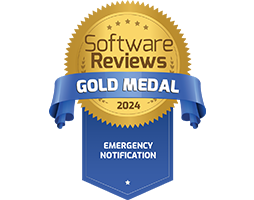Written by Anneri Fourie | Crises Control Executive
The way financial firms manage digital risks is under pressure like never before. With the EU’s Digital Operational Resilience Act (DORA) coming into effect, financial organisations need to prove they can detect, withstand, and recover from ICT-related disruptions. The regulation brings sweeping requirements, not just for IT teams, but across entire organisations.
With the compliance deadline on the horizon, many firms are asking a straightforward, but serious question: How do we meet DORA’s requirements without adding layers of complexity or disrupting day-to-day operations?
The answer lies in the right technology; specifically, Critical Event Management Software. The right platform doesn’t just help you react to incidents; it gives you a clear, automated process to stay compliant, keep people informed, and stay in control no matter what happens.
In this blog, we break down what DORA requires, why it’s more complex than it seems, and how Crises Control can help you meet those challenges head-on.
What DORA Means for Financial Institutions
DORA is a European regulation aimed at strengthening the digital operational resilience of financial entities. It applies to banks, insurers, asset managers, crypto providers, and even third-party ICT suppliers who work with regulated firms. In short, if you’re connected to the EU’s financial system, DORA applies to you.
DORA shifts digital risk management from being an IT department issue to a board-level responsibility. Compliance requires firms to demonstrate strong ICT risk management practices, complete with evidence.
Key requirements under DORA include:
- A detailed ICT risk management framework
- Regular resilience testing of systems and response plans
- Incident reporting to regulatory authorities within set timeframes
- Ongoing oversight of third-party ICT providers
- Structured communication during and after ICT disruptions
Falling short on any of these could mean fines, reputational damage, or worse—being barred from providing services.
Why DORA Compliance Is a Bigger Challenge Than It Looks
You might think: “We already have incident response plans, disaster recovery, and some basic risk management. Isn’t that enough?”
Unfortunately, not.
DORA sets the bar higher. It expects real-time monitoring, automated incident workflows, seamless internal and external communication, and detailed reporting, often within hours of an incident. It also expects organisations to simulate crises regularly and include third-party suppliers in those exercises.
For firms still managing critical events manually or across disconnected tools like spreadsheets, emails, and calendars, this is a big ask. Common issues include:
- Delayed response to incidents because of unclear responsibilities or communication breakdowns
- Inconsistent audit trails that make proving compliance difficult
- Missed regulatory deadlines for incident reporting
- Lack of coordination between internal teams and external partners during a crisis
- Limited visibility of how third-party suppliers handle incidents
To meet DORA’s expectations, firms need more than good intentions, they need a system that brings everything together.
Why Critical Event Management Software is Essential for DORA Compliance
The best way to meet DORA’s requirements is with a platform that automates, simplifies, and centralises your entire incident response and operational resilience strategy. That’s where Critical Event Management Software for DORA comes in.
Here’s how a platform like Crises Control makes a difference:
Automate Incident Response and Stay Ahead of DORA’s Timelines
DORA requires organisations to detect and respond to ICT incidents rapidly. With Crises Control, you can:
- Automatically monitor infrastructure for issues
- Send instant alerts to the right people when something goes wrong
- Trigger pre-set response plans based on incident type
- Assign responsibilities and escalate when needed
Everything is timestamped and tracked—no need to chase people or dig through emails. You can act quickly, with confidence.
Never Miss a DORA Reporting Deadline with Built-In Reporting Tools
Once a serious incident occurs, the clock starts ticking. DORA requires that you notify regulators quickly, with clear documentation of what happened, what was done, and what the impact was.
Crises Control helps by:
- Creating automatic incident logs with all activity recorded
- Storing evidence, decisions, and communication in one place
- Generating reports tailored to different regulatory formats
- Maintaining a digital audit trail for inspections or internal reviews
This reduces reliance on manual documentation and ensures your team isn’t scrambling when it matters most.
Keep Everyone Informed with Targeted Crisis Communication
Communication is often the first thing to break down in a crisis. DORA expects financial institutions to manage both internal and external communications clearly and effectively.
With Crises Control’s mass notification system, you can:
- Send updates across multiple channels (SMS, email, voice, app push)
- Tailor messages to different audiences (staff, regulators, third parties)
- Use templates for regulatory communication
- Track who received, opened, and acknowledged messages
This keeps everyone aligned and reduces confusion during stressful situations.
Run Simulations and Tests That Actually Prove Resilience
You’re not just expected to have a plan—you’re expected to prove it works. That’s why DORA mandates regular testing, from tabletop exercises to full-scale simulations.
Crises Control supports you by:
- Running structured resilience tests
- Simulating real-world scenarios and reviewing response performance
- Tracking task completion times and identifying weak points
- Providing after-action reviews and improvement recommendations
Testing becomes meaningful, not a box-ticking exercise. And you build real confidence that you can handle disruptions when they come.
Manage ICT Third-Party Risk With Real-Time Visibility
DORA holds financial institutions accountable for how their third-party tech providers respond to crises. You’re expected to treat supplier incidents with the same seriousness as your own.
Crises Control lets you:
- Connect third-party systems and contacts into your response plans
- Share workflows and include suppliers in testing
- Monitor their response performance in real time
- Capture data for audit and oversight purposes
You maintain control, even when the issue starts outside your organisation.
Crises Control: A Critical Event Management Platform Built for DORA
Crises Control is more than just a notification tool. It’s a complete DORA compliance software solution built for the demands of financial services.
Key features include:
- Ping Mass Notification: Instantly alert internal teams, partners, or regulators across multiple channels
- Incident Management Dashboard: Launch and manage incidents with full visibility of tasks, updates, and team activity
- Task Manager: Assign and monitor critical actions in real time
- Audit & Reporting Tools: Generate compliance-ready documentation with zero hassle
- Mobile Access: Keep control even during power or infrastructure outages
- Third-Party Integration: Connect external systems and suppliers directly into your incident workflows
- Cloud Hosting Options: Choose local hosting to meet your data sovereignty and regulatory needs
Stay Compliant, Stay Resilient, Stay in Control
DORA is here, and it’s not going away. As financial services become more digital, the risks only grow. Manual tools and patchwork systems are no longer enough.
With Crises Control, you gain a platform designed to handle the complexity of compliance while giving your teams the clarity and speed they need during critical events.
Get a Free Personalised Demo
See for yourself how Crises Control can simplify your path to DORA compliance.
Contact us today to get a free personalised demo and discover how our platform helps financial institutions like yours manage risk, protect operations, and meet regulatory expectations with confidence.
Request a FREE Demo








